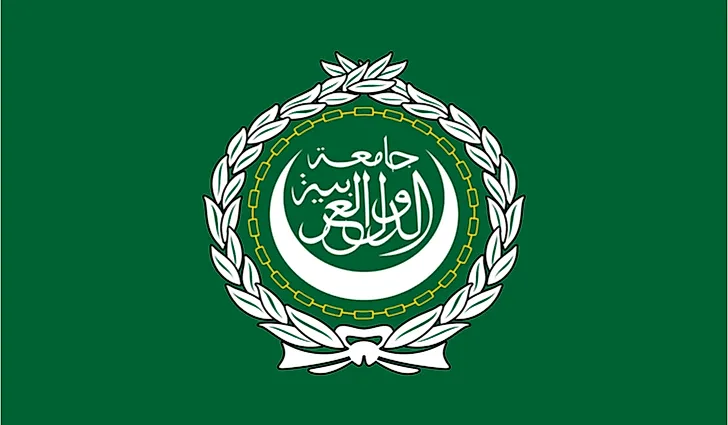List of Arab League Members

The League of Arab States is a voluntary association of countries that use Arabic as the official language or whose members are mainly of Arab origin. The Arab League aims at fostering cooperation among its members and coordinates their policies. The League facilitates economic, political, social, and cultural activities designed to enhance the welfare of its member states. It does this through some of its organizations such as the Arab League Educational, Cultural, and Scientific Organization (ALESCO) and the Council of Arab Economic Unity (CAEU).
Formation Of The League Of Arab States
Following the adoption of the Alexandria Protocol in 1944, the League of Arab States was established in 1945 in Egypt with six countries as the founding members. These were Egypt, Iran, Jordan, Lebanon, Iraq, Saudi Arabia, and Syria. It formed a mutual defense treaty in 1950 followed by the common market in 1965.
Arab League Members
The League of Arab States is made up of 22 countries including Palestine which the League recognizes as a country. However, the participation of Syria in the organization's activities got suspended in November 2011 due to the government’s suppression of the civil war. Egypt was expelled from the League from 1979 to 1991 due to its peace treaty with Israel. In the second half of the 20th century, there was an increase in membership of the League, with 15 more Arab countries joining and four more joining as observers.
Chad is not a member of the league, though 12% of its population identifies as Arab and Arabic is one of the country’s official language. Chad applied for membership in 2014. Israel also is not a member although about 20% of its population is Arabic Palestinians and almost half of the country’s population are descendants of Jews from Arab countries
Interactions Between Member Countries Of The League Of Arab States
The League provides a forum for the members to coordinate their policy decisions, deliberate on matters of common interests and take a joint position as well as settle some disputes among its members such as the Lebanon Crisis of 1958. Each member country has a single vote, and the decisions made by votes are only binding to the countries that participate in the voting. The countries, for example, signed the Joint Defense and Economic Cooperation in 1950 to achieve coordination among its members in military defense measures. In 2015, its leadership announced the formation of a joint force to help them fight and counter extremism within their countries.
Demographics Of Arab League Countries
The overwhelming majority of the residents of the countries identify as Arabs. The estimated population as of 2015 was 423 million over an area of over 13,000,000 km2, resulting in a population density of 27.12/km2. Egypt is the most populous with over 90 million people with Comoros as the least populated with 0.6 million.
The predominant religion of the Arab League is Islam. There is also an estimated population of 15 million Christians in Egypt, Iraq, Jordan, Lebanon, and Sudan among others. There are also other minority religious groups such as Yazidis, Druzes, and Shabaks among others. The official language for the states is literary Arabic based on Classical Arabic. However, the countries have other sub-dialects such as Somali, Berber, and Kurdish among others.
Economy Of The Arab League
The area is rich in resources with most countries having oil and natural gas deposits. Tourism is the other rising economic activity with Saudi Arabia, the UAE, and Lebanon leading the way. The telecommunications industry is the other budding and highly competitive sector. The other significant economic projects championed by the League include the Arab Gas Pipeline which transports the resource from Egypt and Iraq to Jordan, Turkey and into Europe. There is also the Greater Arab Free Trade Area (GAFTA) trade agreement which aims at making the sale of products within the bloc free of tax.
Cultural Interactions Between The Member States
The Arab League has sponsored sporting events among the member states. For example, there is the Pan Arab Games which is considered the biggest sporting event in the nations’ calendars. There are also plans for the Arab Champions League between the Arab clubs.
What Is The League of Arab States?
| Rank | Country | Population |
|---|---|---|
| 1 | Egypt | 92,519,544 |
| 2 | Algeria | 37,100,000 |
| 3 | Iraq | 37,056,169 |
| 4 | Morocco | 32,064,173 |
| 5 | Sudan | 30,894,000 |
| 6 | Saudi Arabia | 28,146,658 |
| 7 | Yemen | 23,580,000 |
| 8 | Syria* | 21,906,000 |
| 9 | Somalia | 11,400,000 |
| 10 | Tunisia | 10,673,800 |
| 11 | United Arab Emirates | 8,264,070 |
| 12 | Libya | 6,733,620 |
| 13 | Jordan | 6,332,000 |
| 14 | Palestine | 4,550,368 |
| 15 | Lebanon | 4,224,000 |
| 16 | Kuwait | 3,566,437 |
| 17 | Mauritania | 3,291,000 |
| 18 | Oman | 2,845,000 |
| 19 | Qatar | 1,699,435 |
| 20 | Bahrain | 1,234,596 |
| 21 | Djibouti | 864,000 |
| 22 | Comoros | 691,000 |











